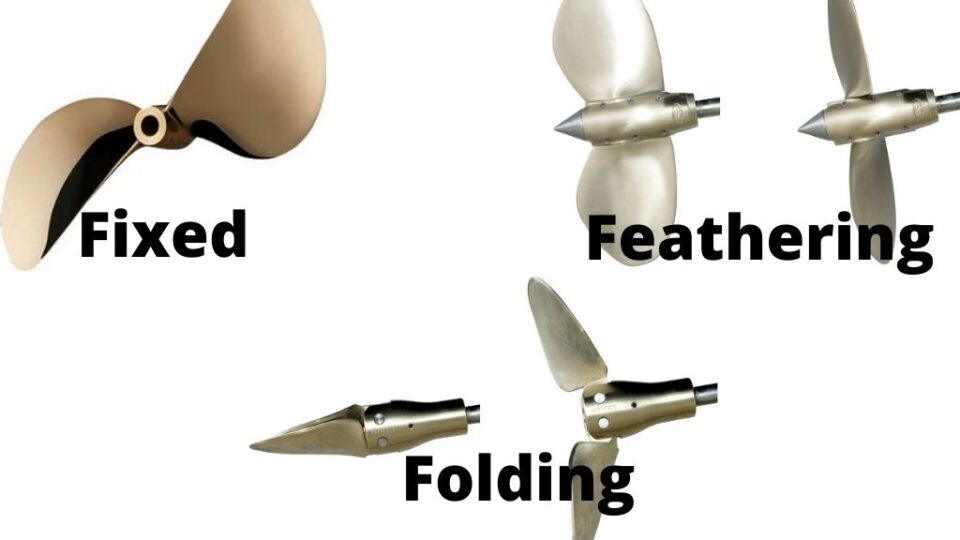Fixed Vs Folding Vs Feathering Propeller
Out of sight, out of mind goes the saying, so it often is for your boat’s propeller. Crucial as this piece of equipment is to your safe and rapid movement from a to b, it often receives very little attention. You simply set it and forget it – until something goes wrong. That’s a shame because most new boats are fitted with fixed-blade propellers as standard, and older boats often have them too. While that is fine when the engine is running ahead, a fixed propeller is inefficient astern. It applies real drag to a boat under sail.
Tests vary in their scientific-ness, but data suggests that a fixed prop that is locked creates at least 20 times as much drag vs a folding or feathering propeller at 5kt. In speed terms, that equates to some 20% more pace with a folding or feathering propeller vs a fixed one. That data suggests that folding and feathering props are much better than fixed. Crossing the North Sea from Harwich to Ijmuiden means that it could save you four hours.
Folding or Feathering?
Folding propellers – where the blades close up around the central boss – are marginally more efficient in sailing mode than a feathering prop, that has blades that simply rotate to a position parallel to the direction of movement. This makes them the racer’s choice, but it is a narrow margin and pales into insignificance next to a fixed prop. A feathering prop is nearly as efficient as a folding prop when going ahead and typically a bit better astern. Feathering blades can be more suited to long keel boats where the prop is enclosed, providing insufficient space for a longer folding prop.
On the other hand, a folding prop is less apt to tangle with fishing pots and waterborne debris. In the early days of these designs, folding props could be reluctant to fully deploy when going astern. However, manufacturers claim this tendency has now been eliminated. Tests suggest that they are far more effective astern at high revs rather than low and can cause a loud clunking noise when they deploy.
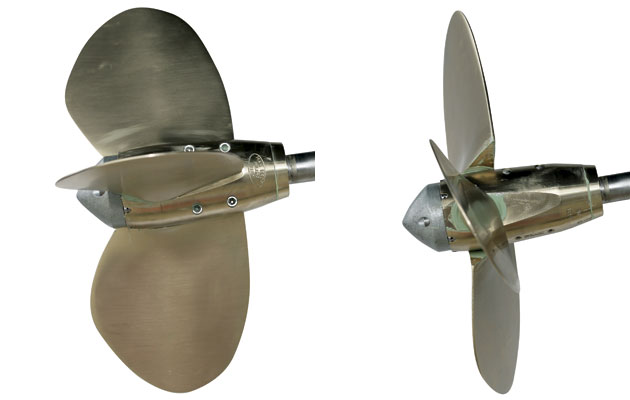
Propeller Diameter
This is a measure of the prop’s size and refers to the width of the circle that the blade tips turn through. It is twice the distance from the center of the boss to the tip of a blade. In general, the more powerful your engine, the bigger the prop diameter needed to utilize that power effectively.
Propeller Pitch
The blades of your propeller slant or curve forward (or back in reverse) – this is what part of what generates the motion. This pitch is usually measured in inches and refers to the distance the propeller would advance in one revolution if it gripped the water perfectly. Imagine your prop is a screw; the pitch is how far into the wood the screw advances with one full turn.
The steeper the pitch, the more work the engine must do with each revolution. A standard pitched propeller will ensure that the engine can just reach full rpm at full throttle. Some sailors like being overpitched, however. It puts more strain on the engine, which means it will never reach peak revolutions, but it’ll keep the boat moving a bit faster through the water until peak power. Turning over more slowly, the engine is a bit quieter and more efficient.
Some props have a variable pitch, automatically adjusting to the pace of the boat and revs of the engine. Others allow the pitch to be changed via a turn of a screw on the boss or require the boat to be hauled out.
Prop Blade Number
This is essentially down to you. Fewer blades mean less drag – hence the reason that so many fixed props are two-bladers. But with the exceptionally low resistance of a fixed or a folding prop, this is barely an issue. On the other hand, there can be more vibration with a two-blade model than a three or more blader. And more blades give more power. Most cruising yachts have three blades.
Best Folding and Feathering Props
Gori
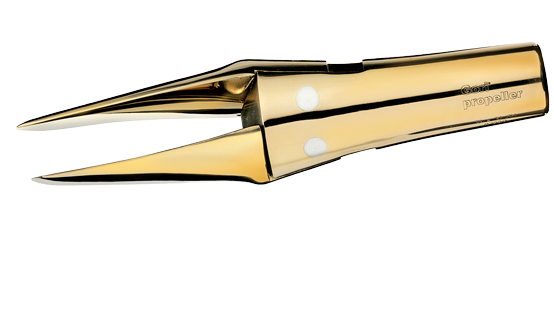
The Gori is a folding prop that claims to have the thrust of a fixed prop. Made from nickel aluminum bronze, the blades are geared so that they cannot open or close independently. They pivot through 180 degrees to give the same pitch in forward and reverse, which means optimum speeds in both directions. Uniquely, Goris have an ‘overdrive’ function for motor sailing, which deepens the pitch of the prop to give the same power from lower engine rpm.
With the lowest drag of any folding prop, according to some German tests, Goris are used by the Volvo Ocean Race boats and many of the racing one-designs, as well as cruising brands.
Autoprop

Bruntons’ feathering propeller is a technical marvel with either two or three blades that rotate perpendicular to the prop shaft. Because each blade’s weight is offset, they will rotate through 180 degrees between forward and astern, giving them the same optimum pitch in both directions. Free to rotate on their axis, the blades will adopt varying pitches, according to the needs of the boat.
So, when you are motor sailing, they pitch up to account for the driving force of the sails, reducing fuel consumption and engine rpm. This feature should also reduce prop walk astern.
Varifold
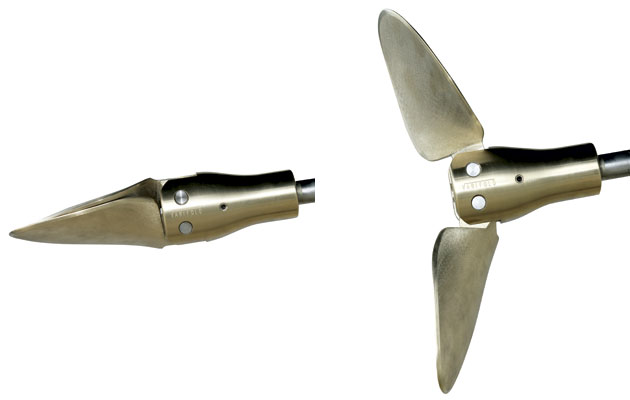
Also manufactured by Bruntons in Essex using high-quality nickel aluminum bronze, the Varifold is designed to appeal to racers and fast cruisers. As a folder, it offers less resistance in sail mode than its Autoprop sister.
The company claims a unique design for the blades of the prop that cuts noise and vibration. A helical pitch, including reduced pitch towards the blades’ tips, reduces pressure and noisy pulses against the yacht’s hull.
Featherstream
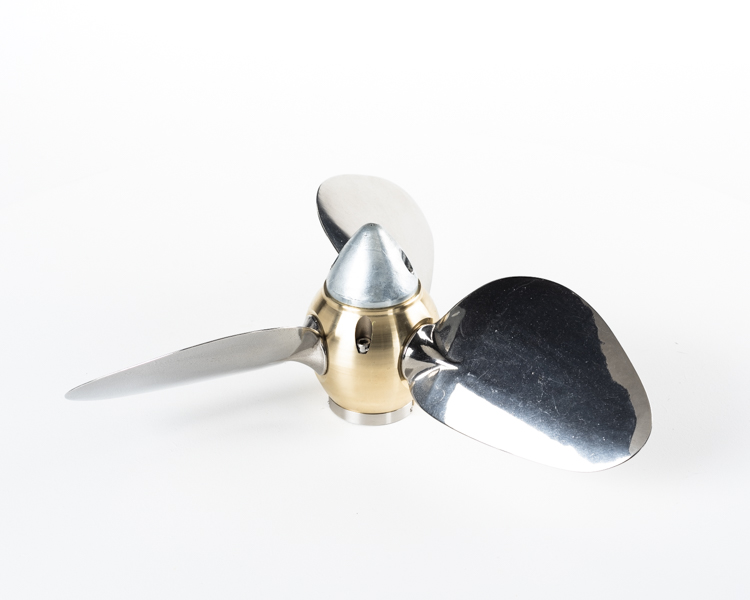
This UK-built propeller is manufactured using aluminum bronze for the hub and stainless for the blades. There is no standard spec for their props because Darglow prefers to talk through a client’s requirements in detail first.
The pitch on a Featherstream is determined by the pitch cassette installed with it. This can’t be altered when the boat is in the water. Still, it is always possible to send off for a differently pitched cassette from Darglow and install it via a 10-minute operation when the boat is hauled. If you send the old cassette back, this is cost-free.
The blades are completely flat for frictionless sailing and rotate through 180 degrees for optimum power ahead and astern.
Maxprop
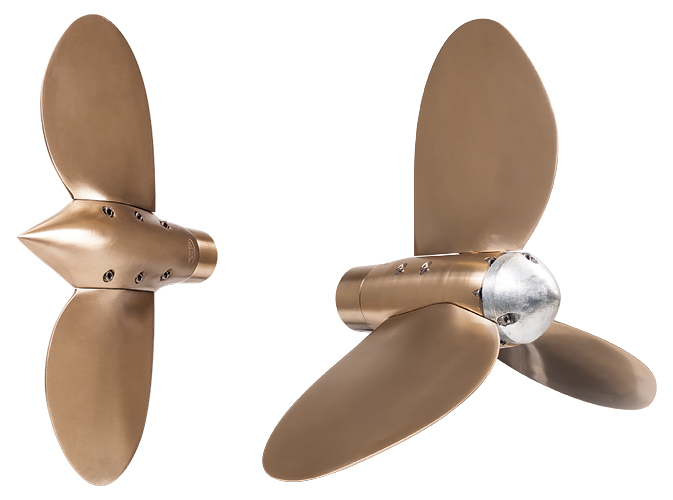
Maxprop blades are flat and pivot through 180 degrees so that the leading edge is presented in both forward and reverse – making for excellent thrust either way.
Pitch can be changed in 2-degree increments at the turn of a screw, which can even be done in the water with the Easy and the Whisper models. It is not quite the variable pitch that the manufacturer claims, but it does offer some flexibility. The blades are linked by gears, so they open and close at the same time.
Maxprop says its products are particularly good for catamarans.
Kiwi Prop
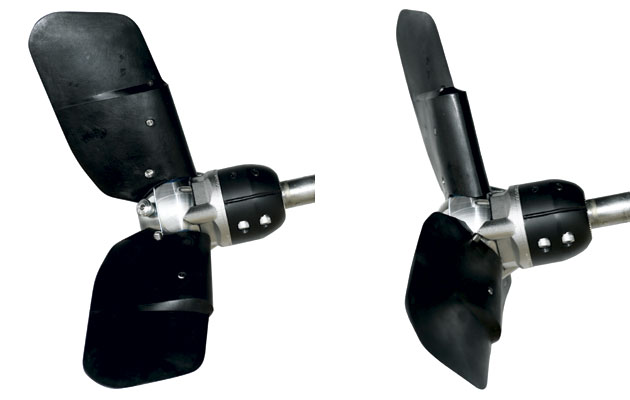
Unlike all the other propellers featured here, the blades of the Kiwi Prop are a special nylon-glass composite called Zytel. Glass may seem an odd choice for a propeller. Still, the material is incredibly tough, lighter than metal, and corrosion-free. It is also much cheaper than bronze, a fact reflected in the lower retail prices. The manufacturer also points out that the blades are sacrificial in the event of a collision and much cheaper to replace than potential repairs to the stern gear.
The blades are fatter than some but symmetrical, free to rotate around their axis for excellent feathering. The boss allows the blade assembly to rotate 100 degrees, offering adjustable pitch ahead and maximum pitch astern for more power at low speeds.
Kiwi is also developing a two-blade folder.
Autostream
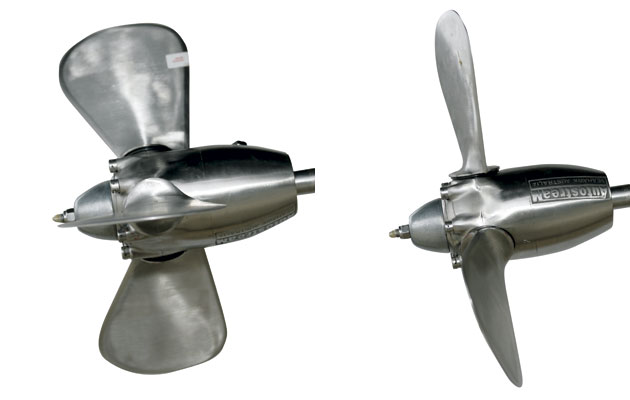
This feathering prop is entirely made of 2507 duplex stainless steel for exceptional strength and resistance to corrosion. It features narrow blades that swing through 180 degrees in reverse.
Pitch is independently set for ahead and astern and can be easily adjusted – as can direction of rotation, if a change of engine necessitates it.
Slipstream
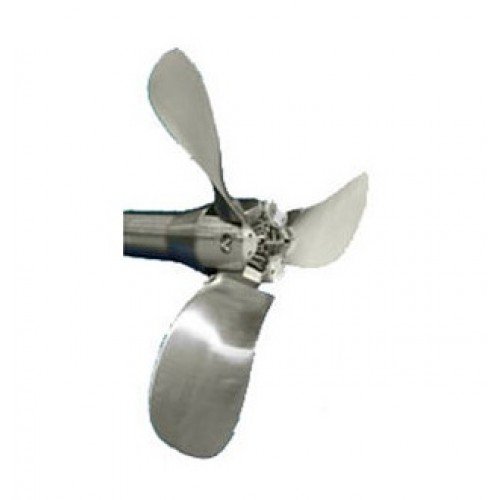
The folding prop from Seahawk is also in stainless steel – but this time low carbon 316 for long life.
The blades are geared, so they are synchronized, and the bushes can be replaced easily when worn. Plastic bump stops prevent the prop from clunking when it swings open, and the same polyurethane forms side plates to stop metal-on-metal wear. Seahawk provides a five-year warranty.
Flexofold
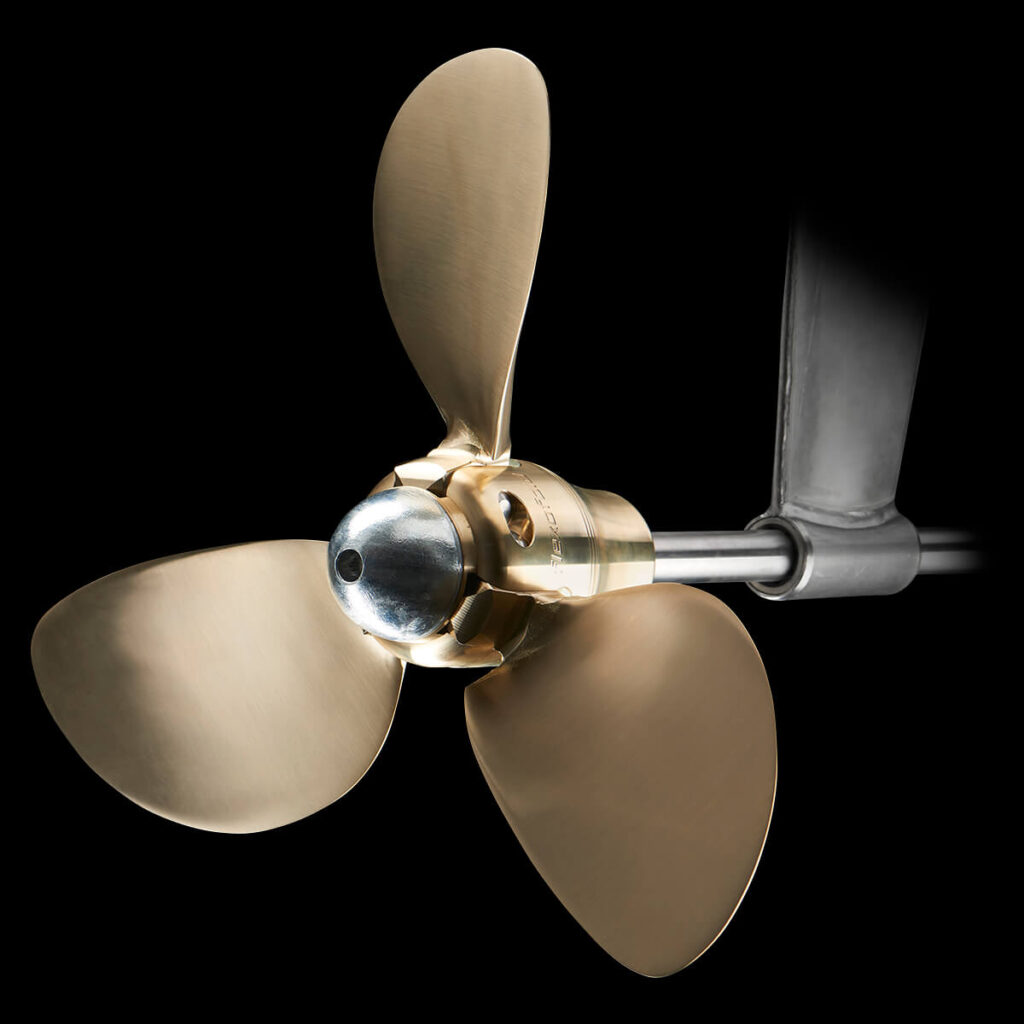
The Flexofold uses high-quality nickel aluminum bronze in its construction. Being water lubricated, its gears need no grease. Its simplicity and competitive price have made it the go-to prop for many boatbuilders. It has large shock absorbers for quiet opening, and in tests, it performs well both ahead and astern. Also available in a special race variant with a corrosion-free composite boss that saves 2.8kg of weight.
Variprop
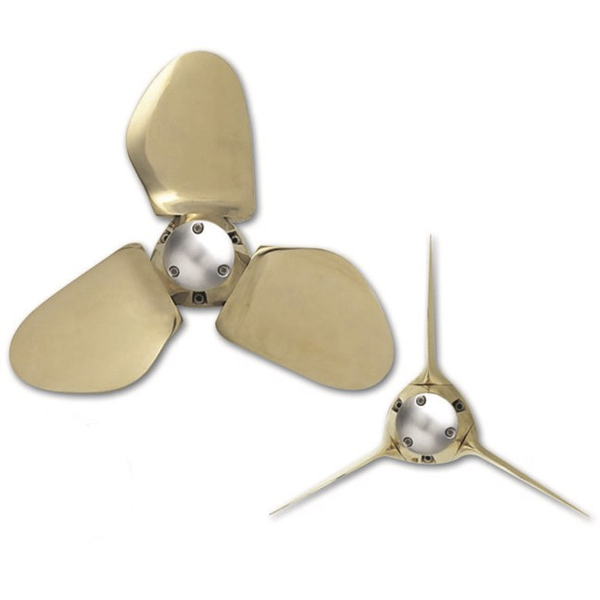
The Variprofile is a robust prop, built to order in ice-class nickel aluminum bronze for an extremely long life. Like most feathering props, the blades are flat and thin, and they rotate 180 degrees in reverse to offer the leading edge in both ahead and astern. A simple turn of a screw is enough to change the pitch, which can be independently set in both directions – ahead, it is all about optimizing thrust, while in reverse, it is about reducing prop walk. A patented multidisc brake acts as a shock absorber to eliminate the clunk when you engage the prop. Its short hub makes the prop really suitable for long keeled boats with a small prop aperture.
Variprofile
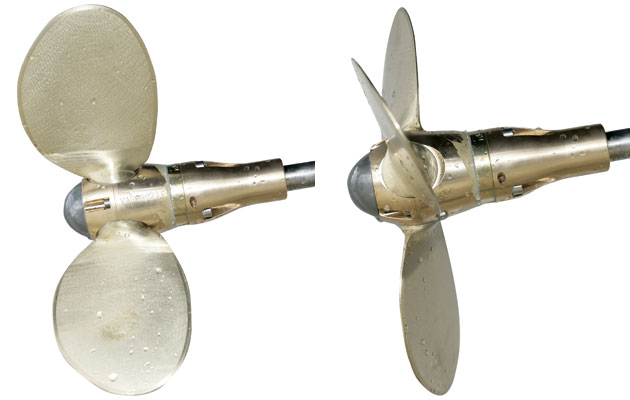
Similar to its Variprop, Variprofi le is SPW’s cheaper, small-boat feathering prop. It is mass-produced for modern serial yachts with engines up to 140hp. Otherwise, it has many of the same features as its custom-built sister, including micro-adjustment for the forward and aft pitch.
